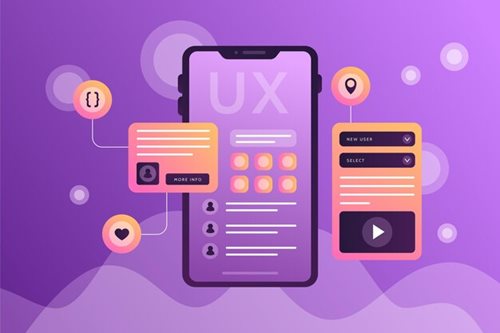Get your free consultation today!
Share with your Colleagues
Categories
ROI Calculator
Moonstone Interactive is the only San Francisco Bay Area web design firm and Internet Marketing expert that offers a free online ROI Calculator
Author: Steve Herz

Table of Contents
- B2B vs B2C Customer Behavior
- B2B eCommerce Personalization Strategies You Can Implement
- Benefits of B2B eCommerce Personalization
- The Role of Segmentation
- Gain More Loyal Customers With Moonstone Interactive
- FAQs About B2B eCommerce Personalization
B2B eCommerce personalization empowers you to create a tailor-made shopping experience. This shift in approach can significantly enhance your business, giving you the tools to understand and meet your customers' needs. By doing so, you can boost your sales and customer retention, demonstrating the concrete advantages of this strategy.
Understanding the unique behavior of different users enables you to customize your strategies to meet these diverse needs. This adaptability, a crucial strength of B2B eCommerce personalization, ensures it can be applied to your specific business scenarios, no matter how unique.
Let's explore five proven B2B eCommerce personalization strategies. Personalization transforms your platform from another business tool into an essential component of your customer's success.
Imagine a world where every business you interact with online understands your unique needs and preferences. Personalization is the essence of a B2B eCommerce strategy that customizes the online shopping experience to meet each business or customer's specific requirements.
In simple terms, B2B eCommerce personalization is like having a personal shopper for your business. It tailors the online shopping experience to meet each business or customer's needs and preferences, just like a personal shopper would do in a physical store.
Unlike B2C, where you're dealing with individual consumers, B2B involves companies that may have several buyers with different requirements. Personalization here means offering relevant products, personalized content, and experiences based on each customer's unique behavior, industry, and purchase history.
Why do customers love personalization? Because it makes their shopping experience smoother and more relevant.
Imagine logging into an eCommerce site and being greeted with products that perfectly match your needs without the hassle of sifting through countless options. This is the power of personalization. It saves time and effort, making the shopping experience efficient and enjoyable, just like having a personal shopper.
When businesses feel understood and valued, they're more likely to engage with your platform, purchase, and return for more.
B2B vs B2C Customer Behavior
B2C customers are prone to making quick, emotion-driven decisions, swayed by enticing deals or catchy ads. Their purchase journey is typically short since they're buying for personal use and don't require multiple approvals.
In contrast, B2B customers embark on a more intricate buying process that involves thorough research and multiple stakeholders. Their decisions hinge on the need for long-term value and detailed, reliable information.
Nevertheless, both B2B and B2C customers want an easy, fulfilling, and efficient shopping experience. Here's an overview of the differences between B2B and B2C customers:
B2B Customers:
- Longer decision process involving multiple stakeholders
- Focused on long-term value and return on investment
- In-depth research requiring detailed and reliable information
- Requires multiple approvals or consensus
- Large, recurring purchases for business needs
- Primarily logic-driven with low emotional influence
- Complex customer journey involving long-term relationships
B2C Customers:
- Shorter decision process, typically individual decision-making
- Often emotion-driven, based on personal desires
- Less research, easily influenced by ads and deals
- No need for external approval
- Sporadic or one-time purchases for personal use
- High emotional influence, with branding playing a significant role
- Quick customer journey, often impulsive decisions

B2B eCommerce Personalization Strategies You Can Implement
Regardless of your industry, there's bound to be some tough competition. And in an age where companies expect an incredible customer journey, you will want to meet as many customer preferences and needs as possible.
To make your B2B eCommerce platform stand out, here are some top-notch personalization strategies you can put into action:
1. Personalized Search Functionality
Personalized search functionality can be a game-changer for your B2B eCommerce platform. Here's how to make it work:
First, use customer data, such as past purchases, browsing history, and industry-specific needs, to understand the customer. Find out what each wants, build a complete customer profile, and implement personalized catalogs. This approach fulfills what the user wants and provides relevant search results that save them time and effort, relieving them from the hassle of traditional shopping.
Next, use predictive search. As customers search for their desired items, predictive search suggests products based on the customer's previous searches and purchases. This feature makes finding the right products quicker and more efficient, respecting the customer's time and making their shopping experience more enjoyable.
Offer customized filters and sorting options tailored to different customer segments. For example, a tech company and a manufacturing firm will have other priorities. Letting customers filter and sort results based on their unique preferences ensures they find what they need without the hassle.
Dynamic search results that update based on customer behavior are essential. Returning customers should see different, more relevant results than first-time visitors, reflecting their past interactions with your site.
Finally, intelligent search algorithms using AI learn from customer behavior. These algorithms continually refine search results based on what customers click on, add to their carts, or purchase, ensuring that the most relevant products are always front and center.
2. Omnichannel Marketing
Imagine a world where you unify the brand message and customer experience, regardless of whether they're engaging with you on your website, social media, email, or even in person. Customers should always feel like they're dealing with the same company, no matter where they connect with you.
To achieve an omnichannel user experience, centralize your customer data so that the same rich information informs every interaction. Your customer can chat with support, receive an email, or browse your site. Regardless of the means of communication, their preferences, past purchases, and behavior should guide the interaction.
Keep your messaging uniform across all channels. If you're running a promotion, ensure it's visible on your website, highlighted in emails, and shouted out on social media. Consistent messaging reinforces your brand and helps customers get all essential updates.
While consistency is vital, tailor your approach to each channel's strengths. Social media is perfect for customer engagement and community building, while email delivers personalized offers and updates. Use each channel to its fullest while maintaining a cohesive overall strategy
3. Personalized Product Recommendations
Start by leveraging customer data such as past purchases, browsing history, and industry trends to understand customers' preferences. When you analyze this information, you can suggest products that truly resonate with each customer.
Implement dynamic recommendation systems that adapt in real-time to customer behavior. If a customer frequently browses a particular category or shows interest in specific products, your system should highlight these items prominently on their next buying journey.
Additionally, use AI and machine learning algorithms to refine your recommendations continuously. These technologies can learn from customer interactions and improve the accuracy of suggestions over time.

4. Dynamic Pricing
Tailoring prices based on each customer's purchase history, average order value, and order volume can help you offer deals that resonate with their unique needs.
Picture a loyal buyer company that frequently places large orders. Offering them special discounts or bulk pricing can make them feel like VIPs. This kind of attention keeps them returning and encourages them to buy even more. It's a simple yet effective way to show appreciation and build long-term business relationships.
Dynamic pricing adds another layer of excitement. Modifying prices in real-time based on market conditions, demand, and customer behavior allows you to offer irresistible deals. For instance, if a customer repeatedly checks out a particular product category, a timely discount could be the perfect incentive to complete the purchase.
Segmenting your customers is another must for personalized pricing. Different industries or business sizes have varying price sensitivities. Tailoring your pricing strategy to these segments ensures your offers are always relevant and compelling.
This approach fosters a sense of fairness and customer loyalty. When customers see that you're willing to negotiate price, they're more likely to trust your brand and return for future purchases.
5. Easier Recurring Ordering Process
Making the recurring ordering process smoother can dramatically enhance the experience for your B2B customers, turning a routine task into a breeze.
Picture this: With a "Reorder" button, your customers can effortlessly replicate their previous orders—there's no need to search and select items repeatedly; just a quick click, and they reorder instantly.
But why stop there? Introduce subscription services that allow customers to set up automatic deliveries for their regularly needed products. Automation reduces administrative overhead and ensures they always have essential supplies.
To add another layer of convenience, create personalized order templates. These templates, customized according to each customer's frequent purchases, can be set to include preferred products and quantities, making reordering a matter of a few simple clicks.
Flexibility is another significant factor. Offer various payment options to accommodate different business operations. Whether it's extended payment terms or tailored billing cycles, making the financial side of things as accommodating as the ordering process can remove friction and foster loyalty.
Remember ease of modification. Customers might need to adjust their recurring orders, add new items, change quantities, or tweak delivery schedules. An easy-to-use interface allowing quick adjustments delivers the stress-free experience customers expect.
Benefits of B2B eCommerce Personalization
At this point, it's easy to see how these personalization techniques can help you and your customers. But let's take a deeper look into how personalization in B2B can help your brand:
- Improved customer experience: Imagine a tailored shopping journey where every interaction feels tailor-made. A personalized experience in B2B eCommerce does just that. It adapts product recommendations, pricing, and browsing experiences to meet each business's unique needs.
- Increased sales and conversion rates: Personalized experiences resonate deeply with customers' business needs, significantly increasing the likelihood of purchases. By offering personalized recommendations and strategic pricing, you encourage not just one-time buys but more extensive and frequent orders, directly enhancing your sales and conversion rates.
- Better customer retention: Personalization creates a connection. When B2B clients feel that you consistently meet their specific needs, they're less likely to switch to competitors. Consistency builds trust and deepens the relationship, fostering stronger loyalty and significantly improving retention rates.
- Efficient marketing spend: With personalization, you're not just throwing darts in the dark. Customizing marketing efforts to specific customer groups allows for more precise targeting, reduced waste, and a maximized ROI of your campaigns.
- Competitive advantage: Offering a personalized shopping experience sets you apart in a crowded market. While many B2B vendors still stick to a one-size-fits-all approach, being able to offer customized services and pricing can distinguish your business and attract more customers.
- Better insights and analytics: Gathering and analyzing detailed eCommerce data on your customers can provide invaluable insights into behavior, preferences, and trends, which can guide your decisions on everything from product offerings to strategic growth initiatives.
- Streamlined operations: Personalization can streamline more than just the customer experience—it can also optimize your operations. Features like easier recurring ordering processes and predictive stocking can cut overhead costs and enhance supply chain efficiency.
The Role of Segmentation
Segmentation plays a significant role in creating a personalized customer journey for your B2B customers. Think of it as putting your customers into different groups based on what drives their decisions. This strategy lets you customize your online marketing and sales efforts and hit the right points with each group, which sets you up for success.
Organizing customers based on factors like industry, company size, and buying habits gives you a clearer picture of their needs and preferences.
For example, small tech startups and large manufacturing companies need different things. Segmentation allows you to tailor campaigns that speak directly to each group's challenges.
It also helps you identify your most valuable customers and give them the attention they deserve. You can maximize your marketing efforts and strengthen your relationships with key clients by zeroing in on the most promising segments.
Gain More Loyal Customers With Moonstone Interactive
Ready to take your B2B eCommerce personalization strategy to the next level? Moonstone Interactive is here to help! With our expertise in creating personalized shopping experiences, we can transform how your customers engage with your site.
From tailored product recommendations to strategic pricing and seamless operations, we have the tools and insights to boost your sales and customer satisfaction.
Don't settle for the ordinary—let us help you stand out in the crowded market.
Get your FREE consultation today!
FAQs About B2B eCommerce Personalization
How does segmentation help in personalization?
By grouping customers based on similar needs, you can define marketing efforts to hit the right note with each group, making your messages more relevant and effective.
What tools can help me personalize my B2B eCommerce?
There are plenty of tools to give you a hand! CMS and DXP systems, AI-powered recommendation engines, and advanced analytics platforms help you gather and analyze customer data to deliver top-notch personalized experiences.
Can small businesses benefit from B2B eCommerce personalization?
Yes! Personalization isn't just for the big guys. Small businesses can stand out by offering a more customized experience, building stronger relationships, and increasing sales.
Do I need to bother with personalized pricing in B2B eCommerce?
While it's optional for everyone, personalized pricing can be a game-changer if you deal with large orders or frequent buyers. It lets you offer better deals based on purchasing behavior, making your customers feel unique and valued.


